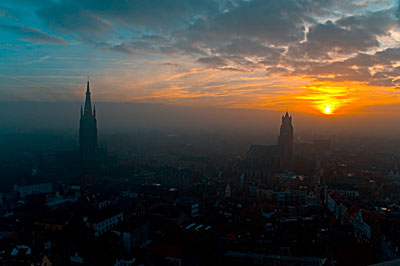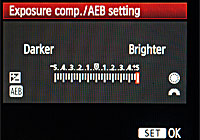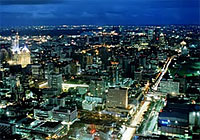|
Dear Stay Focussed reader,
Welcome to the latest newsletter.
We're quite lucky to have views out over the Ocean in our new house, and even luckier, we get to see some great sunsets.
Which got me thinking ...
What makes a great sunset?
 I took this photo a few years ago in Bruges, Belgium, and it handily covers many of the main things to remember when photographing sunsets. I took this photo a few years ago in Bruges, Belgium, and it handily covers many of the main things to remember when photographing sunsets.
I've whittled it all down to a few simple tips, so here goes - my 5 top tips for photographing sunsets:
Photographing sunsets, tip 1 - include something in the foreground
It's all well and good concentrating on the sky - it is after all the real star of the show - but, like a movie, unless you have something in the foreground to support the main star, it all falls apart a bit. Great movies need a good supporting cast. Great sunsets need a supporting foreground!
In the photo I took the silhouette of the skyline plays an important part in the photograph.
Photographing sunsets, tip 2 - underexpose the photo
If you underexpose your photo a little bit (by either setting a faster shutter speed, a smaller aperture, or just dialing down the exposure control) the colours will become much richer.
And in a sunset photo, rich colours are very important!
Photographing sunsets, tip 3 - keep shooting!
The thing about sunsets is that they are ever-changing. Just when you think it looks good, and you're packing away your camera, you look up and the whole scene looks even more amazing!
There comes a point though where darkness overwhelms the colours. That's your cue to stop. Until then, keep going, firing off a couple of shots every minute or so.
Photographing sunsets, tip 4 - get some clouds in
Sounds a bit daft, but sunsets look better when there's some cloud in there to break the sky up a bit.
Without the clouds the sky is just a simple blend from dark blue to deep red - not unattractive, but a bit boring when compared to having a few clouds to break up, and even enhance, the colours.
Photographing sunsets, tip 5 - turn off the flash
There's no point letting the flash fire if you're capturing a sunset, but a lot of cameras will turn it on automatically because the camera thinks the scene is too dark without it.
However, by using the flash, first the whole sunset will end up totally underexposed, and second, anything that is close enough for the flash to illuminate will suddenly be brightly exposed in your scene.
You're better off turing off the flash, sitting the camera on a tripod or solid surface, and then set the self timer. Press the shutter button, wait for the self timer to fire the shot, and don't touch the camera until you're sure the shutter has closed - for sunsets the exposure could be half a second or more.
Hope this helps in your attempts at photographing sunsets.
See you next month, and in between on Facebook,
Darrell.
PS: If you know of anyone else that you think would find these newsletters and the site useful, please pass this email along - let's help everyone take better photos!
|
Understanding exposure

Find out all about exposure control and how it affects your photography.
Night time photography tips

Find out how to improve your night time photography.
Shutter speed tips

Being able to control the shutter speed can lead to some great effects. Find out how to control shutter speed.
How to add foreground interest

Find out how adding foreground interest could transform your photography.
|

